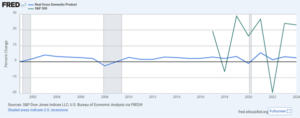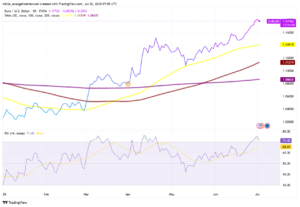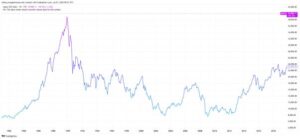The European Central Bank (ECB) has lowered interest rates by 25 basis points, marking a notable shift in its monetary policy. This move brings the key deposit rate to 2%, down from its peak of 4% seen in mid-2023. The decision follows a decline in inflation, which has now dipped below the ECB’s 2% target for the first time in a while.
According to newly released data, inflation in the euro zone dropped to 1.9% in May. In response, the ECB has updated its inflation outlook, now expecting an average rate of 2% in 2025, compared to its earlier forecast of 2.3%. The primary factors behind this adjustment include lower energy prices and a stronger euro. Interestingly, while general inflation is easing, core inflation – which excludes food and energy – is expected to reach 2.4%, slightly higher than previous estimates.
Economic growth in the region, however, remains slow. The euro zone economy grew by just 0.3% in the first quarter of 2025. Although this modest expansion may be revised upward, the overall growth forecast for 2025 remains at 0.9%, unchanged from earlier expectations. Investment and exports are being held back by ongoing uncertainties, particularly related to global trade policies. However, increased government spending on defense and infrastructure is expected to provide some support in the coming years.
The ECB did not offer clear guidance about future interest rate moves, leaving the door open for either further cuts or a pause. Global developments, including potential tariffs from the U.S. and Europe’s response, could influence future decisions. These factors create a complex and uncertain environment for policymakers.
Although Thursday’s rate cut was widely expected by the market, its long-term implications are still unclear. The ECB acknowledged that the path forward is uncertain and stressed that while inflation is easing, they remain cautious about declaring full confidence in the economic outlook.





